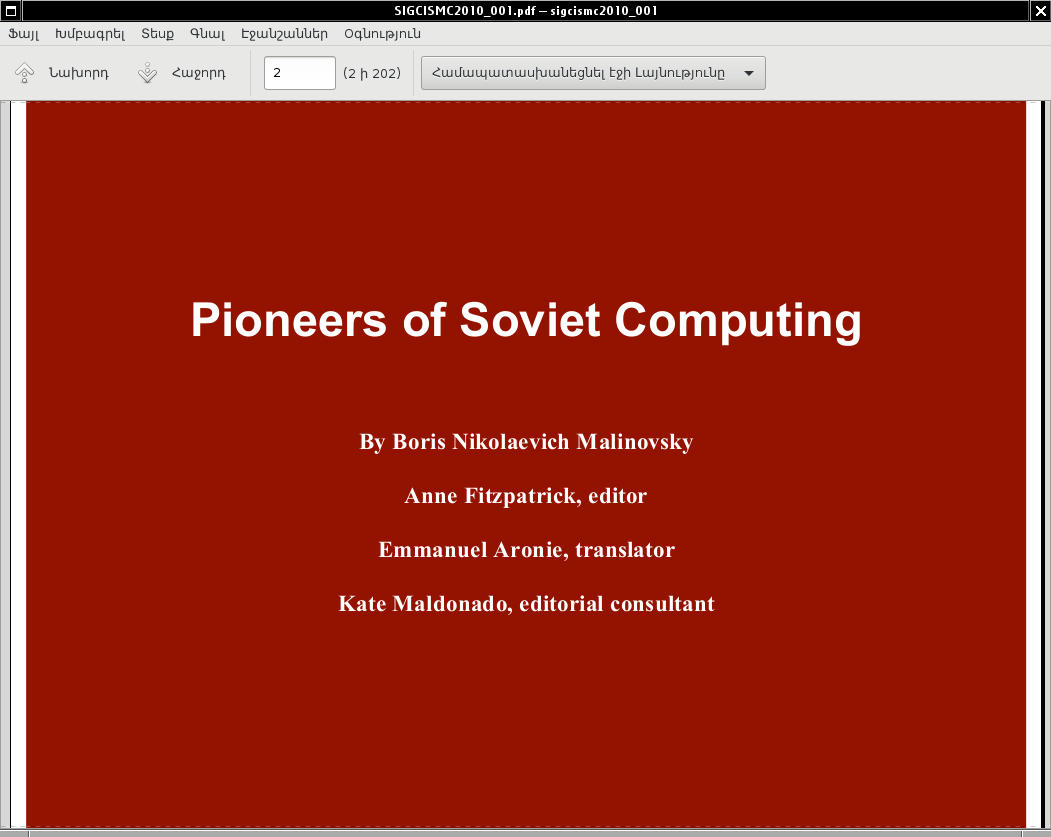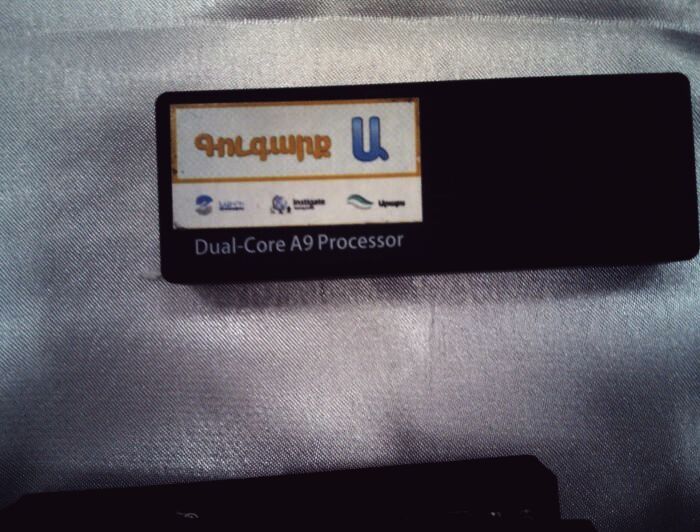
The M-3 could have also remained a one-of-a-kind machine (its development was not officially sanctioned by the government), had it not been for the academician Viktor Amazaspovich Ambartsumian. Upon his arrival in Moscow in 1954, he asked his friend Andronick Gevondovich Iosifian, Director of the All-Union Soviet Scientific Research Institute of Electro-mechanics [today the Vserossiskii nauchno-isledovatel’skii institut elektromekhaniki, or VNIIEM], to help him obtain a computer for the Armenian Academy of Sciences. Iosifian turned to Brook, and the two of them agreed to manufacture three M-3s at the Institute of Electro-mechanics, which had its own manufacturing facility. One computer was to be built for the Institute of Electro Mechanics, one for the Yerevan Institute of Mathematics of the Armenian Academy of Sciences, and another for Korolev’s space program. They formed a joint group of specialists: Matyuhin (from Brook’s laboratory), Boris Moiseevich Kagan, George Petrovich Lopato (from Iosifian’s Institute), and others. In 1956, the first of the M-3’s was fine-tuned and presented to the State Commission, together with technical documentation required for industrial mass- production.
…Because the M-3 was actually a self-initiated project, independent of any state plans, the State Commission headed by Bruevich and assisted by Shura-Bura showed its true character by not wanting to acknowledge this computer, claiming that it was “born illegitimately.” Although they did eventually accept it, two years went by without it’s going into mass production. During this time, the Yerevan Institute of Mathematical Machines was founded and began producing its own computers using our documentation for the M-3. 27 At the same time, the first industrial computer factory in Minsk, Belarus, was built, but had nothing to produce. The factory managers learned that Iosifian had a model of a computer but nobody had given him permission to make it. Only then were the M-3’s documents transferred from the Institute of Electro Mechanics to the factory in Minsk and the M-3 computer became the basis for computer manufacturing in Yerevan and Minsk.
#book #quote #computing #yerevan
I have updated my Retro-Computing page with extremely old recovered pages:




#retro-computing #retro #fonts #font #history #retrocomputing #armenian #bulgarian-games #electron-programma #electron #game #games #pacman #gobbler #ghost-gobbler #oric #oric-atmos #pravetz #pravetz-8d #restoration #computing
I have uploaded some historical photos of computers and devices designed in Armenia with some descriptions http://norayr.arnet.am/RetroComputing/Armenian/photos/index.html
#computer #armenia #yerevan #mergelian #history #computers #retro #retro-computers #vintage #historical #technologies #information-technologies #masis #razdan #nairi #nairi-3 #nairi-4 #pgp #memory #tape #digital #computing #techno #Informatica #photos #photo #design
Running 4 copies of an operating system at once
Dick explained to me that they were using an operating system from a company called Telesoft. Telesoft, headed by UCSD Pascal author Ken Bowles, was building an Ada compiler on top of its ROS (Renaissance Operating System) product. He told me (and I remember this clearly) that they had the operating system running in single user mode but that they wanted to run it in multi-user mode. At that point I was barely 21 years old. I had written a whole bunch of system-level 6502 assembler code and I had a really good ground-up understanding of the way that contemporary computer hardware worked. After studying the manual for the SUN board, I decided that I could simply break the 2MB of physical memory in to 4 chunks of 512KB each and run 4 copies of the operating system, gaining control via interrupts and device drivers.
#6502 #telesoft #pascal #ada #operating-systems #ucsd-pascal #compiler #ros #renaissance-operating-system #programming #history #computing #programming-languages #sun #intellimac #unix #msx #motorola68000 #68000 #68k #motorola-68k #ibm #stanford #research #memory

I was able to attend educational expo yesterday. It was my first time I went to Mergelian institute. Eventually, I saw a Kochar’s sculpture. I think they could find a better place for her. There was a escalator in the building, but only one, for moving up. For other direction there was staircase.
Read the rest and see more photos.
#armenia #yerevan #photos #education #expo #robots #robotics #technologies #school #Ayb #Instigate #armtab #vostan #bzoz #Aygestan #Berdzor #Gugark #computing #computer #cnc #linux #reprap #3D-printing #linux-cnc #scratch #logo #exhibition

Urbit is a personal cloud computer. Right now, the cloud computers we use run OSes designed for minicomputers in the ’70s. An ordinary user can no more drive a Linux box in the cloud than fly an A320. So she has to sit in coach class as a row in someone else’s database. It’s definitely air travel. It’s not exactly flying.
The user of the future will fly her own computer. She will own and control her own identity and her own data. She will even host her own apps. She will not be part of someone else’s Big Data. She will be her own Little Data. Unless she’s a really severe geek, she will pay some service to store and execute her Urbit ship - but she can move it anywhere else, anytime, for the cost of the bandwidth.
#computer #computing #urbit #vm #argemra #nock #hoon #arvo #clay #software #freedom

#fosdem #brussels #photo #openpandora #gta-04 #openmoko #openphoenux #qtmoko #neo900 #free-hardware #free-software #dragonbox-pyra #pyra #dragonbox #games #computing #freedom
http://www.openphoenux.org/events/fosdem2014/images.php